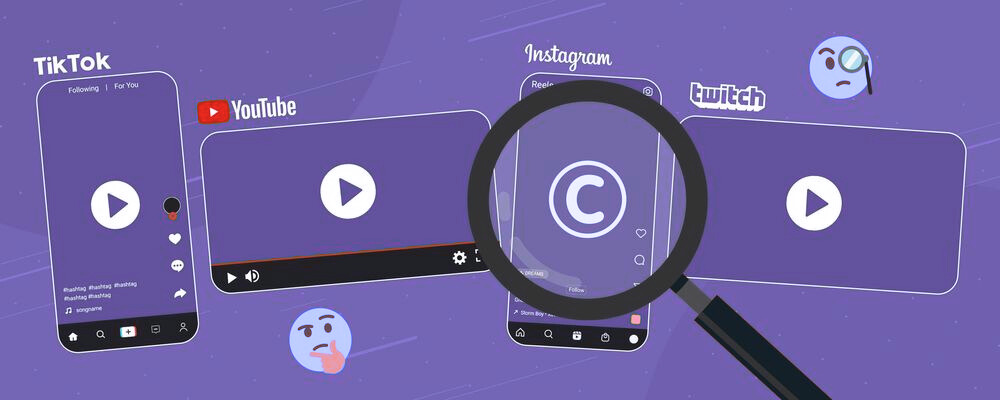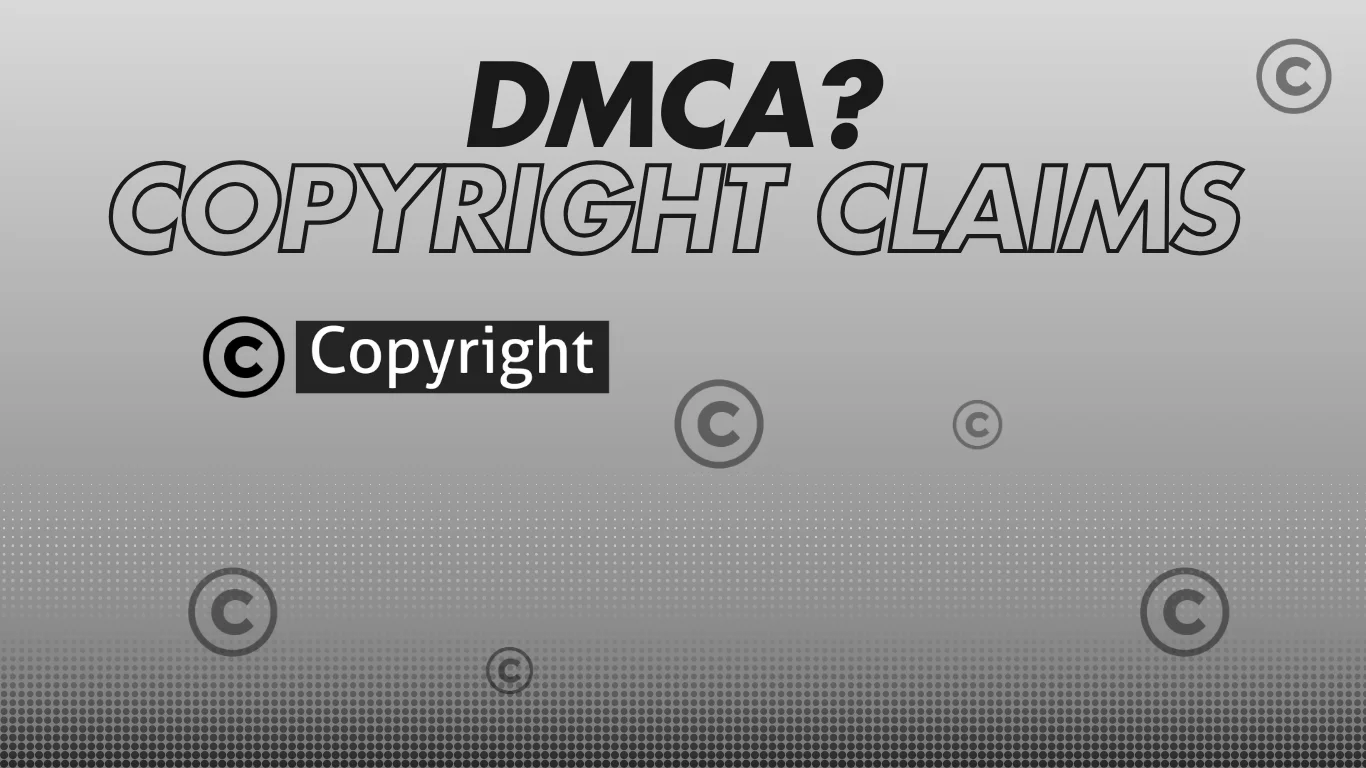The thought of having your videos removed is every creator’s worst nightmare. The threat of DMCA copyright claims can feel overwhelming, especially when even top creators like PewDiePie have faced takedowns. But how can you protect your videos from DMCA strikes, and what exactly does the DMCA mean?
The Digital Millennium Copyright Act (DMCA) is a law you’ve likely heard other creators mention. While its legal language might seem intimidating, understanding it is simpler than you think. This legislation not only protects copyrighted material but can also help safeguard your own content!
In this guide, we’ll explain what the DMCA is and break down how it applies to your videos. By understanding these rules, you’ll be able to confidently navigate copyright laws and avoid DMCA takedowns. Keep reading to learn how to keep your content safe from those dreaded copyright strikes!
What is the DMCA?
The Digital Millennium Copyright Act (DMCA) has been protecting creators’ content from unauthorized use for over 25 years. Enacted in 1998, during a time when internet usage was booming, the DMCA was introduced to clarify what could and couldn’t be done with other people’s work online.
The DMCA copyright claims not only prevent the theft of content from individual creators but also outline legal responsibilities for internet service providers and global content platforms. What does this mean for creators? Platforms like YouTube and Twitch must adhere to specific rules when copyrighted content is uploaded. If they fail to do so, they could face DMCA copyright claims and be held liable for copyright infringement.
So, what happens if copyrighted material is used without permission? The copyright holder issues a formal DMCA notice, requesting the material be taken down. This notice can be sent directly to the individual or to the platform hosting the content.
For example, if you use a Jay-Z song in your video, Roc Nation might send you a DMCA notice. Similarly, if you include a Game of Thrones scene in your stream without approval, expect a notice from HBO. While the copyright holder could contact you directly, they are more likely to send the notice to a platform like YouTube or Twitch, which will then follow its own procedures to remove the infringing content.
Why is the DMCA Important for Content Creators?
The DMCA copyright claims can be a double-edged sword for content creators. On one hand, the DMCA protects your copyright, allowing you to issue a takedown request if someone uses your videos without permission. On the other hand, it also gives others the power to request the removal of your content if you infringe on their copyright.
🔔A DMCA takedown request is usually processed through the platform where you’ve uploaded your content. So, if you receive a DMCA takedown, it will be managed through YouTube, Twitch, or whichever platform your video is hosted on.
This is why understanding how to protect your videos from DMCA claims is crucial—it helps prevent unnecessary takedowns. Each takedown results in lost ad revenue. And even if you’re not monetized, losing a high-performing video can be incredibly frustrating.
Can I Still Get a DMCA Takedown if I Live Outside the United States?
Yes! You can still be subject to a DMCA takedown even if you live outside the United States, despite the DMCA being part of US copyright law. This is because the DMCA copyright claims are based on the World Intellectual Property Organization’s (WIPO) treaties, which aim to protect copyrighted material globally.
Nearly 200 countries are signatories to WIPO. Each of these countries has its own version of the DMCA, such as the European Union Copyright Directive, which applies across most of Europe.
These countries follow similar processes to the DMCA and will honor a DMCA takedown request. In the same way, your content can be taken down if it infringes on copyright from any of these countries.
How to Avoid DMCA Issues

Once you understand that the DMCA is designed to protect copyrighted material, the simplest way to avoid DMCA copyright claims is by not infringing on someone else’s work. If you use copyrighted material in your videos, you’ll need to obtain the copyright holder’s permission first.
To avoid a DMCA takedown, ensure you have permission to use any music, footage, or images in your content. By following this simple checklist, you can keep your videos safe from potential DMCA takedown requests.
DMCA Checklist
- Have I used copyrighted content?
If your video is 100% your own work, you won’t receive a DMCA takedown request. Copyright claims only arise when copyrighted material is used without permission. - Do I have permission to use copyrighted content?
If you haven’t secured permission from a copyright holder, you’re at risk of receiving a DMCA takedown. To stay safe, use royalty. - Have I correctly attributed the copyright holder?
When using copyrighted material with permission, ensure you properly credit the copyright holder. Failing to do so can lead to DMCA claims. Make sure to follow the correct attribution guidelines to avoid any legal complications. - Do I need to dispute a DMCA takedown request?
If you think a DMCA takedown was issued incorrectly, you can dispute the claim through the platform where your content is posted. Platforms like YouTube, TikTok, and Twitch have appeals processes. However, be aware that during the investigation, you may not be able to monetize your content.
What to Do If You Get a DMCA Takedown Request
The first sign you’ll get a DMCA takedown request is when you receive a copyright notice on your video. These notices differ by platform. For example, you may receive a copyright claim on YouTube or a DMCA notification on Twitch, depending on where your content is hosted.
Although it can be stressful, there are options available to you. If you believe the DMCA takedown has been issued incorrectly, you can appeal the request. Below are the options available on different platforms for handling a DMCA takedown request:
YouTube: Appeal a Content ID Claim
To dispute a Content ID claim on YouTube, go to YouTube Studio’s Content tab and locate the video with the claim. On mobile, tap Review Issues, or on desktop, click See Details. Find the relevant claim, select Dispute, and follow the instructions to appeal the DMCA takedown request.
Twitch: Submit a DMCA Counter-Notification
If your content has been incorrectly removed on Twitch, you can submit a DMCA counter-notification by emailing [email protected]. Make sure to visit Twitch’s help pages for the required details. Keep in mind that Twitch will share these details with the original copyright claimant.
Instagram: Appeal the Removal of Content
If your content on Instagram is taken down due to a DMCA takedown, Instagram will send you a message explaining your options. You can submit a counter-notification directly from the message, but your details will be shared with the claimant, so be cautious.
TikTok: Submit a Counter-Notification
When your content is removed from TikTok for copyright infringement, you’ll receive a notification. If you believe it was taken down by mistake, you can fill out TikTok’s Counter Notification Form. If your appeal is successful, your video will be reinstated.
It’s important to note that if you’ve received a DMCA takedown due to using copyrighted material without permission, winning the appeal is unlikely. In such cases, you might consider editing the disputed content or replacing it with copyright-free material.
Keeping Your Videos Safe from DMCA Takedowns is Simple!
If you only use copyrighted material that you have permission to feature in your videos, there’s no reason to fear the DMCA or the threat of takedowns. In fact, the DMCA is designed to protect your content from being used without your permission.
While the consequences for violating the DMCA can be severe, avoiding DMCA takedown requests is actually quite simple. All you need to do is ensure you have permission to use any copyrighted material in your content. That’s all it takes!
And if you do receive a DMCA takedown request that you think is incorrect, you can always appeal it through the platform where your content was uploaded. However, the easiest way to avoid the possibility of copyright claims is to use music from Uppbeat’s amazing library of copyright-free music.
Summary
The DMCA (Digital Millennium Copyright Act) is crucial for content creators to understand, as it protects your work from unauthorized use. By ensuring you have permission for any copyrighted material you use, you can avoid the threat of DMCA takedowns. If you mistakenly receive a takedown notice, you can always appeal through the platform’s counter-notification process. To stay safe, consider using copyright-free music from trusted sources like Uppbeat, which offers a vast library of tracks free from copyright claims.
By following these simple steps, you can protect your videos from DMCA copyright claims and focus on creating content without the worry of takedowns.

I appreciate the effort you put into creating this article. It answered all my questions and provided great value.
Your comment just made my day! Thank you Madison for taking the time to read and share your thoughts.